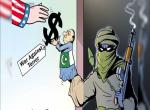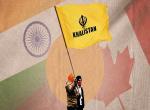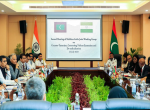Introduction
Instability created by terror-related activities is not a new phenomenon in the Maghreb region or Northwest Africa. Looking at the present scenario in this region, there are no signs of improvement, particularly on security spheres. The emerging developments in Libya, which has the largest oil reserves in Africa, are quite worrisome. The uprising that toppled the regime of the autocrat, Muammar Gaddafi, who ruled the country for 42 years, did not bring any positive results. The rise of radical Islam, particularly after his death, is one of the most profound threats facing by the country today. Notwithstanding the efforts to rebuild the war-ravaged country, anarchy and chaos are spreading at an alarming speed. The problem is now getting multiplied due to gaining foothold of the Islamic State (IS) inside the country. This is an extremely worrisome factor. The absence of political and security mechanism has created a vacuum for this outfit to step in. The implications appear to be turning towards disaster as situation in its immediate neighbourhoods is no better. The Maghreb and North Africa, according to a survey conducted by US-based think-tank in December 2015, have contributed approximately 8,000 fighters in the ranks of IS in Syria and Iraq.1
IS in Libya: Domestic Factors and the Military Campaigns in the Core Areas
For far too long, the penetration of IS influence, both in terms of physical presence and its ideology to Libya, has received inadequate attention. The focus has been predominantly on the epicentres of its operations in Syria and Iraq and; the rising IS-connected activities elsewhere, mostly in Europe. However, some attention was shown to this country during late October 2014 when 800-odd fighters pledged their allegiance to the self-proclaimed Caliph Abu Bakr al-Baghdadi in Derna, the first Libyan city outside West Asia that was added to al-Baghdadi’s caliphate. Thereafter, the decapitation of 21 Egyptian Coptic Christians on 15 February 2015 on a beach along the Southern Mediterranean coast shocked the entire world. But these incidents did not result in any collective efforts to prevent this dreaded organisation from firmly establishing its organisational structures inside the country. So far, countermeasures are ad hoc in nature. But this is a clear and present danger signal. The Virginia-based IntelCenter has reported four Libyan terror groups which pledged allegiance or support the IS,2 and they are as follows: Islamic Youth Shura Council (22 June 2014-support), Islamic State Libya (9 November 2014-allegiance), Lion of Libya (24 September 2014-unconfirmed support/allegiance) and Shura Council of Shaba al-Islam (6 October 2014-allegiance).
What has facilitated the phenomenal growth of IS in Libya? The absence of a unity Libyan government and the presence of several militant groups are attributed to the increasing grip of the IS. The problem has become more severe as the country is being run by “two warring parliaments, each supported by loose coalition armed groups”.3 Moreover, given the existing deep-rooted factionalism between the Islamist armed groups and that of the Libyan National Army, the capability to resist the inward movement of this Sunni terror group has become limited. While they continue to be at loggerheads over exercising their influence after Gaddafi’s death, IS has gained considerable leeway to enter by taking advantage of the prevailing unrest. This relatively new organisation now controls more than 200 kilometres of the country’s northern coastlines. The actual count of IS fighters operating in Libya is debatable due to differences in the estimations. While the United States (US) defence officials put it at 3,000, the recently-released Pentagon report estimated the same between 5,000 and 6,500.4 Regardless of these discrepancies, such an influx will only cause more trouble not only for the country but for the immediate region which is highly volatile. A few terror groups in countries such as Algeria, Tunisia and Egypt are adhering to the pernicious ideology propagated by Al-Baghdadi’s group. Therefore, an emboldened IS presence, in all likelihood, will strengthen the networks with those which have already pledged allegiance or supports its cause.
The gradual yet calculative shift in the focus of IS towards Libya is also due to the increasing military campaigns by Russia (since 30 September 2015) as well as the US-led coalition air strikes (since August 2014). Although such military measures, to an extent, curbed IS’ territorial expansion within Iraq and Syria, there are several loopholes which prevent the external forces from reaching the desired goal of bringing an end to the menace. But as it is getting cornered in both their core areas, it is trying unrelentingly to export its operational capabilities to distant foreign territories. The 13-November Paris-attack is a case which signified IS’ capacity to strike distant targets with a meticulous planning. In other words, this is perhaps a shift in its strategy due to which it has started to give more attention to Libya.
In order to strengthen control, top-level leaderships of the IS (from Syria and Iraq) positioned other leaders in Libya and are apparently diverting more resources to them. In the words of an expert, “The group is currently conducting a campaign against Libya’s oil resources and security that aims to both perpetuate instability in the country and set conditions for ISIS to capture Libya’s oil wealth”.5 There is a growing attempt to seize more territories and the oil infrastructures to augment their source of funding to run the organisation and to pay their fighters. As it is, revenue which is earned from the oil trade in the black markets is one of the most important sources of funding for the organisation. The January-attack against two of largest export terminals, namely, Es Sider and Ras Lanuf, handling 80 percent of the country’s oil reserves, triggered a major concern. As observed by a few, the attack, “undermine the financial viability of a peace agreement between two rival militia groups vying for control of Libya by destroying the country’s main source of revenue”.6 It is through the huge oil revenues that Gaddafi could purchase a large volume of weapons systems and stockpiled them. It is a known fact that this country is one of the biggest repositories for weapons in the region. This has given another incentive for IS to establish itself in Libya.
As it upholds the value of having territories governed by rigid Islamic laws, the geo-strategic location of Libya becomes important for IS. A successful expansion of the “caliphate” to this country will serve its pivotal purposes. One of them is the recruitment drive and, the others include objective to unleash further onslaughts on the European soils, and building up network with like-minded terror groups. Pertaining to the immediate region, this is already a concerning development as a few countries surrounding Libya are combating the rise of radical Islamist groups. Apart from Libyan nationals (mostly from Benghazi and Derna), potential recruits from Senegal and Chad are likely to throng into Libya, and so are the people from poorer countries in the Sahel region, namely, Mauritania and Niger.7 The large scale unemployment and related socio-economic conditions in these countries will encourage dissatisfied youths to fight against their governments, and this can be in IS’ favour. These characteristics will allow the outfit to turn the region into a recruiting hub, and it will “create a physical safe haven that serve as a refuge for central leadership, and a safeguard for ISIS’s ideological legitimacy”.8 There are foreign fighters originating from Morocco, Egypt, Sudan, Tunisia, Saudi Arabia and Yemen in Libya. However, a fierce competition with its parent-organisation Al-Qaeda and other thriving groups, to dominate the “Jihad”, cannot be ruled out. Regionally, this will be a major challenge to the counterterrorism measures.
Furthermore, Given Libya’s close proximity to the European countries, the latter could be more vulnerable to attacks in the future. This is particularly, so, considering the movement of several refugees and migrants using decrepit vessels (often unmonitored) crossing the Mediterranean Sea. IS’ aim to destabilise the Christian-dominated Europe is not unknown. As a result, continuous seizing of opportunity to penetrate and take root in this North African country will set the stage for staging terrorist attacks in Africa and in Europe.
Conclusion
It is no doubt that Libya is emerging as a fallback option for IS due to increasing offensive campaigns in Syria and Iraq. Conditions are becoming more conducive for the group to turn this country into a fertile ground for its activities. The challenges posed by it have increased as there is no unified government to fight the menace. Moreover, the response from the international community is still lukewarm. Apart from the recent occasional US military airstrikes in north-western Libya, no major military action has been contemplated by the Barack Obama administration, or by other Western powers. Even the initiatives which are taking up by France and the United Kingdom will have limited effect in the absence of a robust back-up from the Libyan nationals and that of the African countries which are equally perturbed by the rising momentum of Islamist elements. Moreover, until there is a single government as well as a unified Parliament comprising of all the factions, Libyans’ ability to fight extremism, including IS, will remain fractured and grossly inadequate. For now, it is getting more apparent that IS would deepen its reach in Libya.
Endnotes:
- “Foreign Fighters by Region”, Foreign Fighters: An Updated Assessment of the Flow of Foreign Fighters into Syria and Iraq, The Soufan Group, December 2015, pp. 5, 15.
- “Islamic State’s 43 Global Affiliates”, IntelCenter, http://intelcenter.com/maps/is-affiliates-map.html#gs.uY8Z1Sc
- Harleen Gambhir, “ISIS’s Campaign in Libya: January 4-February 19, 2016”, Institute for the Study of War, 19 February.
- “ISIS fighters in Libya surge as group suffers setbacks in Syria, Iraq”, CNN, 4 February 2016, http://edition.cnn.com/2016/02/04/politics/isis-fighters-libya-syria-iraq/
- Harleen Gambhir, “ISIS’s Campaign in Libya: January 4-February 19, 2016”.
- Benoit Faucan and Summer Said, “Islamic State Poses Growing Threat to Libya’s Oil Industry”, The Wall Street Journal, 6 January 2016, http://www.wsj.com/articles/isis-assault-endangers-future-of-libyas-oil-industry-1452088994
- Eric Schmitt, “U.S. Scrambles to Contain Growing ISIS Threat in Libya”, The New York Times, 21 February 2016, http://www.nytimes.com/2016/02/22/world/africa/us-scrambles-to-contain-growing-isis-threat-in-libya.html
- Harleen Gambhir, “ISIS’s Campaign in Libya: January 4-February 19, 2016”.
Published Date: 5th March 2016, Image Source: https://d.ibtimes.co.uk
(Disclaimer: The views and opinions expressed in this article are those of the author and do not necessarily reflect the official policy or position of the Vivekananda International Foundation)










Post new comment